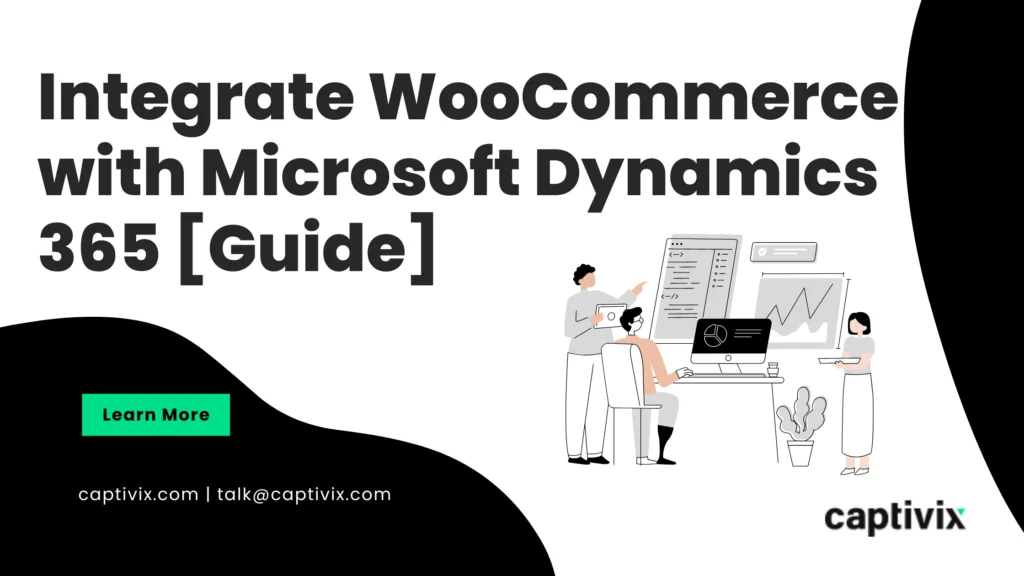Do you want to make an app for Android but have no idea about the cost of Android app development? You have company! Budgeting for an app development project is enormous, especially for a beginner. However, you need not fear; we have you covered. This comprehensive budgeting guide will break down all the costs of making Android apps. Whether employed by a software firm or working independently, developers may learn everything they need about the Android app development cost by reading on.
Introduction to Android App Development Costs
Several aspects must be considered when budgeting for the Android app development cost. The project’s size and scope heavily influence the cost of building an Android app. Second, the project team’s experience determines the Android app design cost. Finally, how many mobile platforms an Android app must support affects its design cost.
What Factors Influence the Cost of Android App Development
Several things affect Android app development costs. Remember these:
1) App Complexity
The complexity of an app has a significant impact on its development expenses. As opposed to complicated applications with advanced features, detailed designs, and sophisticated functionality, simple apps with basic features, restricted functionality, and understandable user interfaces will often cost less to produce.
| App Complexity | Level of Complexity | Average Timeline | Average Cost |
|---|---|---|---|
| Simple app | MVP functionality Basic UI One platform | 2-3 months | $20,000-$50,000 |
| Medium Complex app | Advanced features Custom UI One platform | 3-8 months | $50,000-$150,000 |
| Highly Complex app | High-level advanced features Bespoke UI Two platforms | 6-14 months | $150,000-$300,000 |
2) Type and Category of the App
The sort of Android app being produced will undoubtedly impact how much it will be for the cost of Android app development. Android applications may be categorized into different groups, each with capabilities, user demographics, security standards, and other characteristics.
According to current projections for 2022, the most popular sector for Android app creation is gaming. eCommerce, edTech, and social networking app development are next in popularity. Here are the most popular Android app categories, with examples:
👉Apps for Ecommerce
Amazon and Wayfair are successful e-commerce platforms because they offer comprehensive features that allow millions of consumers to utilize them concurrently while maintaining security.
👉Social Networking Apps
Social networking applications may access hardware features like cameras, audio recorders, etc. By following, they are built using third-party integrations. Since they must accommodate millions of users simultaneously, they are also very scalable.
Thus, Android social networking apps may cost more than their free versions.
👉On-demand Applications
Even the most basic on-demand apps have three distinct iterations: one for the end user, one for the service provider, and one for large businesses.
👉Hardware-dependent Apps
For tasks like data extraction or delivering commands for a specific action, all IoT-based apps tend to depend heavily on hardware.
There are several costs of Android app categories to choose from – food delivery app development cost, e-commerce app development cost, healthcare app development cost, Gaming App development cost, and Restaurant App development cost. The app development cost is assessed based on the type of app you want to make, which is entirely up to you.
| App Type | Estimated cost (in $) | Estimated time(in hours) |
|---|---|---|
| Food Delivery Apps | 40,000-150,000 | 900 |
| Healthcare Apps | 55,000-300,000 | 1,200 |
| Education Apps | 30,000-1,20,000 | 800 |
| E-commerce Apps | 50,000-150,000 | 1,200 |
| Gaming App | 50,000-1,60,000 | 1,200 |
| Restaurant App | 30,000-1,20,000 | 800 |
3) Android App Animation and Design
Once again, the app animation and design process significantly contributes to the overall price tag of developing an Android mobile app. Costs to evolve these designs and animations might range widely based on factors like their complexity and popularity.
4) App Deployment on Play Store
Everything revolves around this central idea. The Android app development cost includes the fee charged by Google if your app is rejected after being submitted to the Play Store. Yet, the necessary must be met before proceeding. The Play Store has trustworthy requirements that each app must fulfill before it can be consented to.
Additionally, there is a one-time $25 charge payable to Google before the release of any Android app.
5)Android App Maintenance
Your investment in Android app creation is not complete once your app has been released on the Play Store; there is still much more work to be done, i.e., App maintenance. Overall, the expense of making an Android app covers not just its creation but also its upkeep over time.
Discussing the features and upgrades you wish to include with your Android app development team can help you obtain an accurate estimate of app maintenance expenses.
6) Android App Development Team
The final cost of an Android app development is highly sensitive to the developer you choose with. An experienced Android app development business, regional team, in-house app development team, or freelance Android developer are all viable options.
A suitable Android app development company may do wonders for your business app, giving it the appearance and functionality of an app costing many times more.
Here is an approximate figure for how much it may cost to hire a third party to build an app for you.
| Cost Factors & Requirements | Simple App | Medium App | Complex App |
|---|---|---|---|
| Development time | 4-6 | 8-10 | 10-15 |
| Developers | $30-40,000 | $50-60,000 | $100,000+ |
| UI/UX Designer | $4-5,000 | $5-7,000 | $10-15,000 |
| Project Manager | $5-7,000 | $10-15,000 | $10,000+ |
| QA Specialist | $8-10,000 | $15-20,000 | $20,000+ |
| Business Analyst | $2-3,000 | $5-8,000 | $8-10,000 |
| DevOps | $2-4,000 | $5-7,000 | $10,000+ |
| Solution Architect | $1-3,000 | $5-8,000 | $9,000+ |
| Total | $20-50,000 | $50-100,000 | $100,000+ |
Steps for Estimating the Cost of Android App Development
Various phases are involved in estimating the Android app development cost to guarantee a thorough and accurate evaluation. You can take the following actions:
✔️Define App Requirements
The criteria for your app should be precisely stated and recorded. It comprises specialized integrations or technologies and their features, functionality, and user interface. The accuracy of the price quote you receive depends on how detailed and explicit your parameters are.
✔️Break Down the Development Phases
The app development process may be falling apart into more manageable stages by adding things like planning, design, development, testing, deployment, and maintenance. It will enable you to independently determine any possible cost drivers and estimate expenses for each step.
✔️Identify Development Resources
Decide what resources, such as programmers, designers, testers, project managers, and any other specific knowledge or abilities, you’ll need for development. Choose between hiring an in-house team and outsourcing the app development to a specialized firm or independent contractors.
✔️Research Development Rates
Find out the typical fees developers and development firms in your area—or the location where you intend to outsource—charge. Prices might change dramatically depending on the region and the developer’s experience level.
✔️Estimate Development Effort
The app’s features and capabilities should be subdivided into smaller jobs or user journeys. Provide time estimates for each activity based on the difficulty and effort necessary. It can be done with your development team’s assistance or by following accepted standards.
✔️Calculate Development Costs
To get the development expenses for each phase, multiply the projected development effort by the hourly rates of the development resources. Consider any additional costs for testing, backend infrastructure, third-party integrations, and design.
✔️Account for App Store Fees
Consider any fees associated with submitting your product to the Google Play Store, such as developer registration or yearly maintenance fees. These expenditures should be included in your budget.
✔️Include Maintenance and Support
CA determine the cost of maintaining and supporting the app after launch. It covers surveillance, client support, server upkeep, bug fixes, and updates. Consider if you’ll handle these tasks internally or by employing a third party.
✔️Calculate the App’s Post-launch Maintenance and support expenditures
It includes monitoring, customer support, server maintenance, bug patches, and upgrades. Consider whether you will perform these jobs in-house or by hiring a third party.
✔️Contingency Planning
Set up money for an emergency fund to cover any unanticipated delays, scope adjustments, or difficulties that may occur throughout the development process.
✔️Review and Refine
To guarantee accuracy and completeness, go through the cost estimation with your development team, the project’s stakeholders, or a qualified consultant. Based on their input, improve your estimate and make any required modifications.
Always remember that cost estimating is a process that must be iterated upon as your project develops and new information becomes available. When deciding on a budget for your Android app development costs, remember other aspects, such as the app’s complexity, design requirements, and potential scalability requirements.
Tips for Reducing the Cost of an Android App Development Project
It is possible to accomplish your objectives while sticking to your budget if you keep the Android app development project to a minimum. Look into these possibilities once.
✅Define Clear Requirements
Spend time identifying and capturing precise and comprehensive requirements for your app. It reduces scope creep and averts needless modifications during the development process, which can raise the cost.
✅Prioritize Features
Prioritize the features that are essential for your app. You may create a minimal viable product (MVP) and launch it rapidly by concentrating on the most important aspects first, saving money by not having to build every feature simultaneously.
✅Choose the Right Development Approach
Consider the benefits and drawbacks of employing a team internally, contracting with a development firm, or working with independent contractors as distinct app development methodologies. Decide which choice best matches your needs and budget by comparing the prices connected with each one.
✅Use Cross-Platform Development Tools
Consider adopting cross-platform app development frameworks or technologies like React Native or Flutter if your program has to run on many platforms. With the help of these technologies, you can create code once and release it to Android and iOS, cutting down on development expenses and time.
✅Reuse Existing Components
Utilize current frameworks, libraries, and open-source programs wherever feasible. It reduces the time and money needed to build new features from scratch.
✅Optimize Design and User Experience
The need for extensive user training or customer support may be reduced if the program is well-designed and has a user-friendly interface. Make an early investment in good user interface & user experience design to reduce usability problems and related expenses later.
✅Test Early and Regularly
Develop a solid testing approach early in development. Early bug detection and repair reduce the need for expensive rework or significant problems later in the development cycle.
✅Consider Agile Development Methodology
Agile approaches like Scrum or Kanban encourage iterative development and frequent feedback loops. It enables you to respond to changes, continually improve and prioritize features, and maximize development efforts, eventually cutting expenses.
✅Optimize Backend Infrastructure
If your project requires a backend infrastructure, you may look at inexpensive options like cloud platforms (like AWS, Google Cloud, or Azure) that provide scalable and pay-as-you-go pricing structures. Therefore, costly initial investments in infrastructure are unnecessary.
✅Plan for App Maintenance
A budget should be set for continuous app support and maintenance. It is possible to avoid serious problems down the road and lower the total cost of ownership by regularly upgrading your program, fixing bugs, and enhancing performance.
✅Effective Communication and Collaboration
Communicate openly with your development team. Outlining the project’s goals, timeframe, and budget helps everyone stay on track and maximize their efforts.
Effective Communication and Collaboration Also Make a Single image for this Point
FAQs
Q1: How long does it take to create an app for Android?
Ans: Several factors, including the app’s features, complexity, design, and development style, might affect how long it takes to make an Android app. Complex software with numerous features may take several months to develop, while a basic app with only the fundamentals may be designed in weeks.
Q2: How much does Android app development cost?
Ans: Android app development costs depend on various aspects, including the app’s complexity, functionality, design standards, development strategy, and development team location. Without knowing the project’s specifics, estimating an accurate cost is difficult. Speaking with seasoned app developers or agencies is recommended to obtain a more precise quotation depending on your needs.
Q3: Can I write my code for an Android app?
Ans: You can make an Android app with programming knowledge and experience. However, creating an app may be a challenging process that calls for coding, design, and testing knowledge. Before beginning a solo development project, evaluating your abilities and the time and effort needed is crucial.
Q4: What programming languages can be used for Android app development?
Ans: Android applications are often written in Java. However, Kotlin‘s popularity and widespread use have increased since it became an official Android language. Other languages like C++ or Python can also be diligent for performance optimization or backend development tasks.
Q5: Should I pay to publish my Android app on the Google Play Store?
Ans: The Google Play Store does charge for releasing your Android app, so yes. The one-time registration cost for a Google Play Developer account is $25 as of the deadline in September 2021. In addition, there is a $25 yearly cost for account maintenance. It is endorsed to consult the official Google Play Store documentation for the most recent information because these costs could change.
Conclusion
In conclusion, accurately predicting the cost of Android app development requires careful consideration of several variables, including the app’s complexity, the requirements for the design, the development process, and continuing maintenance. You may reduce the cost of your app development project by defining precise requirements, ranking features, and selecting cost-efficient development techniques. By implementing these suggestions, you can successfully control your spending while producing an Android app that caters to the demands of your consumers.






Leave a Reply